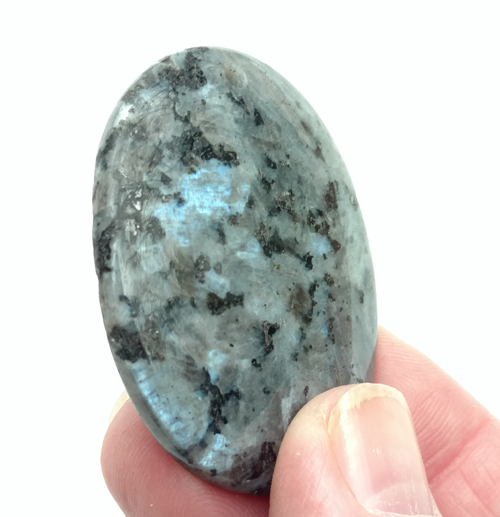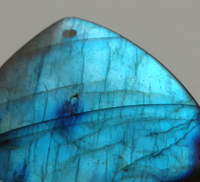Labra-cadabra! The Labradorite and its Famous Blue Flash!
Posted by Denise Hershey on Aug 2nd 2017
The discovery of Labradorite was (not surprisingly) on the Labrador Peninsula in Canada. Labradorite can look very unassuming, especially in flat light. It most often has a gray cast with some black accents. But when you catch the light at a certain angle, you see this beautiful blue or yellow flash. Although Labradorite is fairly common, each stone has its own level of flash.
This one is a lower grade one - Labradorite in Gabbro, it has a nice flash of blue and silver:

I recently splurged on two very fine specimens, one is partially pictured below.

Sources:
Labradorite is mined in Italy, Greenland, Finland, Russia, Canada and Scandinavia.
Care of Labradorite:
Labradorite is a fairly brittle stone. It cannot withstand a hard strike. Store your Labradorite jewelry in a soft container away from other stones and metals.
Metaphysical Properties:
According to the Crystal Bible by Judy Hall, "Iridescent Labradorite is a highly mystical and protective stone, a bringer of light...deflects unwanted energies from the aura and prevents energy leakage.”
Physical Properties:
Per the Gemstones of the World 5th Edition by Walter Schumann: "
Color: Dark gay to gray-black, with colorful iridescence, also colorless, brownish
Color of streak: white
Mohs' hardness: 6 - 6 ½
Density: 2.65 – 2.75
Cleavage: Perfect
Fracture::Uneven, splintery, brittle
Crystal system: (Triclinic), platy, prismatic
Chemical composition: NaAlSi3O8 to CaAl2Si2O8 Sodium calcium aluminum silicate
Transparency:Transparent to opaque
Refractive index: 1.559-1.570
Double refraction: -+0.008 to 0.010
Dispersion: 0.019 (0.010)
Pleochroism: very weak: colorless to pale green, lively green, olive-green
Absorption Spectrum: not diagnostic
Fluorescence: Yellow striations
Join the Newsletter if you haven't already and then go shopping in the menu above.
